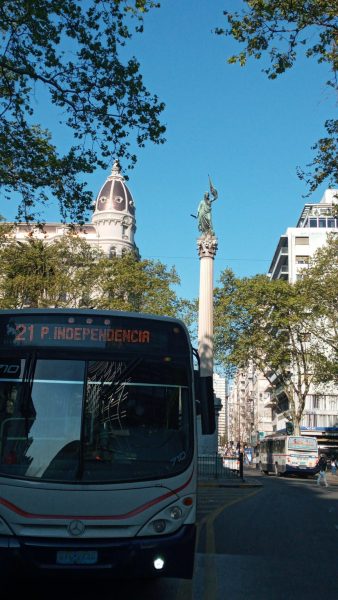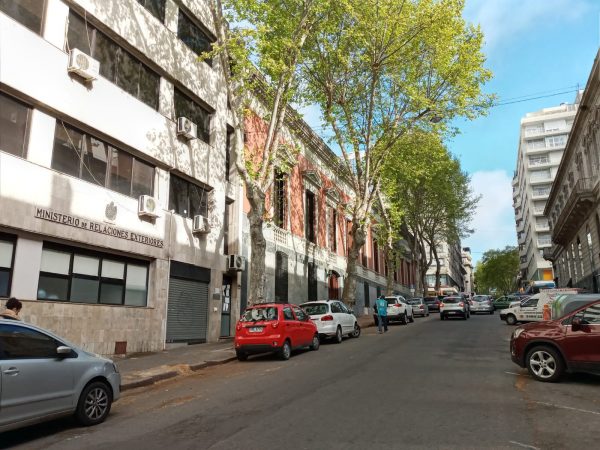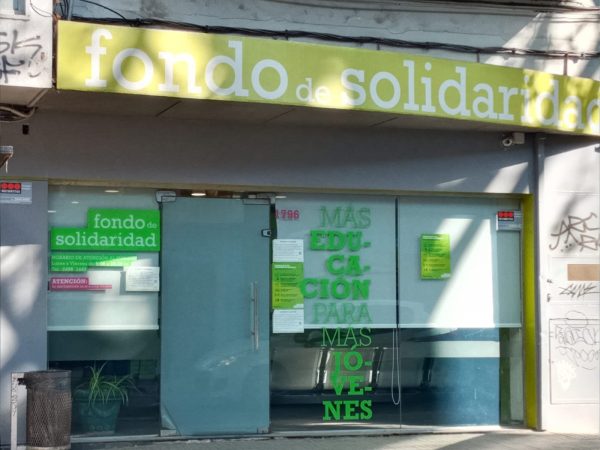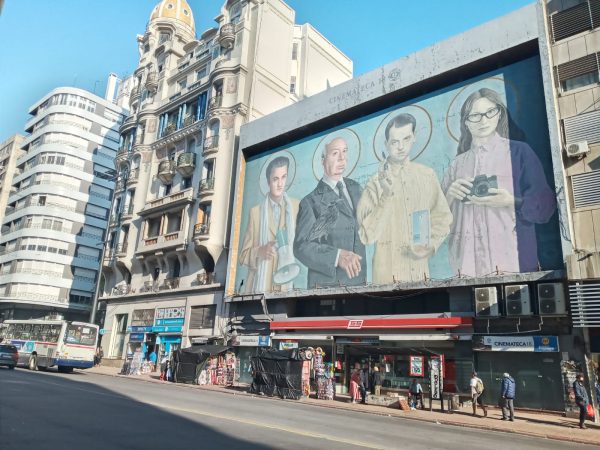Mirror Images of Exile
By Victor Rodriguez Oquel*

HAVANA TIMES – The dictatorships in Latin America were as common as pennies during the twentieth century. These authoritarian forms of government spawned a surge of armed revolutionary movements in their nations. The history books of Mexico, Nicaragua, Argentina and even the peaceful Uruguay, for example, now tell of their guerrilla movements.
In Uruguay, the guerrilla movement was called the MLN, or Tupamaros, commonly referred here as the “Tupas”. The initials MLN stand for Movimiento National de Liberation [National Liberation Movement]. However, all that took place in the distant past. Yesteryear’s guerrillas are now formally recognized politicians, in the leftist coalition called the Frente Amplio [Broad Front].
That’s the party of Pepe Mujica, Uruguay’s unmatched and mythical former Tupamaro president who was imprisoned four times. The one who escaped his confinement in 1971, together with other rebels, by digging in the ground like moles. In this way, they escaped from their penitentiary, in a spectacular feat that reverberated around the world.
In all repressive dictatorships, some rebels are imprisoned, others assassinated, and many others must begin the journey into exile. The latter was the fate of a pair of Tupa guerrilla fighters. This is the story of two of them.
Such was the movement’s secrecy, that neither of the two was aware that the other also belonged to the movement. It wasn’t until they coincided in their decision to flee the country that they discovered each other’s involvement. The imprisonment, torture and persecution taking place forced them to seek exile in Sweden. She had three children from a previous relationship. He had two. They then had three more together. All ten of them left in 1979, on refugee passports that the UN High Commissioner for Refugees obtained for them. The US backed terror of “Operation Condor” was at their heels.
From south to north and back again: the Nicaraguan chapter
For him, life in Sweden was intolerably cold and monotonous, as well as uncertain and with no diaphanous future. They were living life day to day. He didn’t have the head for learning the language. He couldn’t deal with his flattened political life. Even the comfort that the Scandinavians provided him was tedious.
The first six months of that year, 1979, went by in this way. Then, in mid-July, news of the Sandinista triumph in Nicaragua raced around the world. That occurrence revived in him the itch to live in a new world. Only now, he no longer faced the risk of making a revolution, but the possibility of participating in one. In this way, the Central American country became the mine whose gold could sculpt the yearned-for “new man”. Obviously, he wanted to be one of these exemplary figures.
The events in Nicaragua birthed a philanthropic Swedish organization: the “Carlos Fonseca Amador Solidarity Committee with Nicaragua”. At the beginning of 1981, that organization asked him to carry a donation to Nicaragua. He was to oversee the delivery of some industrial machinery for manufacturing shoes.
He arrived in Managua, a city that was very strange. It was very spread out and dotted by ruins. The streets were crooked, with the smell of fresh blood and gunpowder in the walls. Nonetheless, a few days later, he returned to Stockholm with the donation. The Nicaraguan authorities demanded customs payments in order to allow entry of the donated artifacts.
The Swedish, of course, couldn’t accept such an aberration. For his part, he thought that such a policy regarding a gift, offered in solidarity, was scandalous. Nevertheless, back again in the north, his urge to return to Nicaragua didn’t soften. Unexpectedly, several months later, a Tupa guerrilla exiled in Mexico contacted him. Malena, the Tupa in Mexico, called on him to join the Guerrilla Army of the Poor in Guatemala.
He landed in Mexico City in 1981. Previous to embarking on his guerrilla mission, he had to study the geography and history of that country. He also had to be trained in everything related to the coming operation.
However, during that same time, the government of Rios Montt succeeded in disarticulating the insurgent forces. Rios Montt, who came to power via a military coup, launched Operation Sofia, a campaign of terror, in July 1982. The collapse of the Guatemalan guerrilla movement obligated him to take temporary refuge in Nicaragua. This temporary refuge was to last his entire life, because he never left again. Instead, he took up his former project of becoming part of a revolution. He assumed this role with all the enthusiasm typical of an internationalist.
He joined the popular militia in Masaya. During a training on the Coyotepe hill, he met a female Sandinista militant. He formed a definitive partnership with her, and together they had five children.
Readers may wonder what happened to the other woman, the one that remained in Sweden with eight children. Simply put, they remained in that country until democracy returned to Uruguay in 1985. At that time, they were finally able to return to Montevideo. They never saw him again. But that’s another story for another moment, given the unfortunate affairs and difficulties they experienced.

Without wandering into any more back alleys, I continue with the family in Nicaragua. His Nicaraguan children grew up and became adults. The revolution had ended long before, and the Sandinistas had returned to power once again. But this time, it was just Ortega and his consort.
Suddenly, without warning, it was April 18, 2018, and the drumbeat of socio-political crisis burst on the scene. This crisis of enormous dimension would result, months later, in his progeny’s expulsion from Nicaragua. It’s here that the cycle of exile repeats itself, but now in reverse. Father and children exiled, each in their historic moment. The former exiled to Sweden and Nicaragua, and the latter now to Uruguay, the country which had once expelled their father.
Exile is no longer a “reference from an old story”
Today, two generations that have known the scorn of exile share the same irritated and sensitive nerve that throbs tremulously. Once again, political violence has torn up all ties. Yesterday, the parents faced exile from a “rightist” military dictatorship. Today, their children must flee a populist “leftist” dictatorship. It’s a double irony. For the children, the exile their parents had faced was merely “a reference from an old story”, as singer-songwriter Carlos Mejia Godoy puts it.
But, surprisingly, the story has recurred, with unexpected twists and stormy winds banging on the doors adorned with horrors. The uncertainty of leaving without knowing when you’ll return, or, worse yet, if you’ll ever manage to return. Nor who you’ll be by then, returning to a land you’ll find different. How many scars will our wounded souls bear, the imperishable legacy of a pain that can’t be erased?

There are many witnesses to how exile changes people. Mario Benedetti was no longer the same when he wrote his novel Andamios. It was fiction, but with autobiographical references to his exile. We infer a metamorphosed Mario, one who returned to Uruguay unrecognizable to himself.
What’s certain is that there are two roads you can take based on these experiences. There’s the road of an indifference that masks grief, something very difficult to practice. Then, there’s the road to positive redemption of the soul, using the passion of grief to salvage our humanity.
Sometimes those exiled aren’t citizens
The new exiles, the young people who are the subject of these lines, left for Uruguay feeling somewhat privileged. They believed they had the right to their father’s nationality, and that meant more help when they arrived in Uruguay. But as in all things, the law is interpreted through the lens of each society’s values.
Their request for nationalization was begun in the Uruguayan embassy in Managua, so they could enter Montevideo without any greater obstacles. A new beginning awaited them, although no amount of ingenuousness made them think it would be easy.
The youngest of the brothers, the next-to-last child of that exile, enrolled in the university. Childishly assuming he was irrefutably a Uruguayan because his father was, he was motivated to apply for a scholarship. He didn’t want to be a burden on his siblings.
After completing the request, the institution resolved that the youth had no right to the scholarship. They suddenly decided that the kid’s immigration status was that of a “non-legal resident”. How can you be a natural citizen, and at the same time a non-legal resident of the same country? Such a contradiction, as disconcerting as it was humiliating, led him to write an appeal. He directed it to foreign relations, the ambassador and the Commission against Xenophobia and Discrimination.

His epistle read in part: “By means of the present, I wish to document what I consider to be a case of DISCRIMINATION, due to being born outside the country.” They received his accusation, made a few calls and sent a few e-mails. But at the end of the day, these entities all sided with the university in denying the scholarship.
There was no confrontation, nor a careful process of investigation. Everything was carried out in silence. The institutions saved a few pesos by taking advantage of a small administrative detail. Some functionary’s interpretation had ripped away his feeling of certainty, of being a legitimate Uruguayan. Apparently, the legal precept of ius soli [birthright citizenship] carries more weight than citizenship by ius sanguini [right of blood].
That snafu has led him to question sometimes where he’d be better off – in exile or under the tyrant’s boots. It’s unavoidable, though, that either of the two options will provoke all kinds of suffering. The Argentinian academic Nilda Maria Flawia says it best in her essay: Reflexiones sobre el exilio [“Reflections on an exile”]. “So then, we can look at exile as a space of emptiness, of the break between a past and a future, of marginalization, of abandonment.”
—–
*Victor Rodriguez is a Nicaraguan social communicator and cultural manager currently residing in Montivideo, Uruguay.





